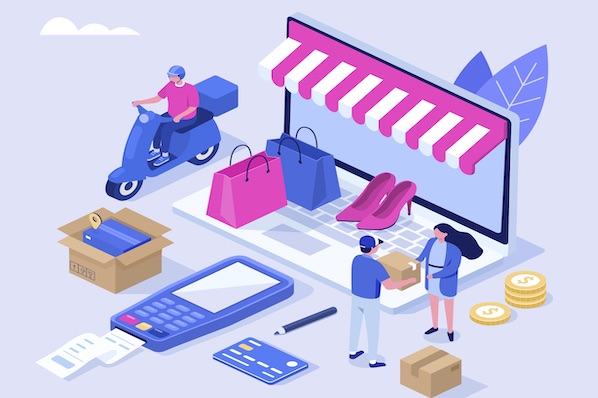5 Questions to Ask When Selling Your Product in Ecommerce Business

It is important to evaluate certain aspects before starting an online store. Those who already have their business need to re-evaluate and modify their business plan to include the new eCommerce market features. When starting a business freshly, the eCommerce operation plan has to be written down, considering all the questions to ensure success.
We at GrowthJockey help businesses to turn their dreams into reality through their expertise in formulating the right strategies. They combine business with technology for maximum efficiency and better customer experience. This helps the eCommerce business flourish easily.
Read on to learn about the important questions to ask before the commencement of an eCommerce store.
These are 5 Questions To Ask When Selling Your Product In Ecommerce Business

1. Which products will you sell in your eCommerce store?
There are two options for this. First is to sell products that are mass-produced, and second is to focus on a certain group of target customers and sell unique product categories in eCommerce.
In the second case, the competition in the market is comparatively less. Thus, its online performance is better in the eCommerce market. The widely available commoditized products often face highly competitive pricing.
In the case of the decision to sell niche products in an eCommerce store, the next step is to come up with product ideas. Selection of product categories of eCommerce can be based on those items that you are passionate about, opting for easily marketable products, looking for trends and adopting them before they take off.
The product must cater to the niche interest or resolve the issue faced by the niche group of customers.
Those having an existing brick-and-mortar store must try to identify if they will continue to sell the same products in their eCommerce store with the niche products just as a subset of the whole inventory or completely revamp their store based on customer requirements. In such situations, GrowthJockey can help realize the goals quickly.
2. Can the products be successfully sold online if they are being sold in brick-and-mortar stores?
Considering logistics is the next biggest part of selling products online. Here, the focus has to be on the experience, expense and shipping. Let us elaborate on each of these three parameters:
- Focusing on customer experience:
In the conventional brick-and-mortar store, the customers can conveniently experience the products and clarify their doubts instantly with the store executives. So, while selling the products online, it is very important to consider replacing this in-person experience by providing multiple images of the products, related videos, and customer reviews.
Anything that would help the customers make their purchase decision should be included in the eCommerce store. It is better to avail of the services of firms like GrowthJockey, which helps businesses to leverage the latest technology to enhance better customer services.
- Shipping products to the customer location:
Product dimensions and weight are the biggest concerns that must be addressed when sold online. Heavier and larger products incur high shipping costs. For competitive pricing, it is important to know the amount of shipping that will reduce the profit margins.
Drop shipping is a great option when the store owner doesn't want to keep any products in stock. The items are purchased and shipped to customers only while selling a product on-site. This can reduce the initial cost of investments, as no inventory needs to be built or maintained.
The only drawback with this shipping method is lower profit margins because of long supply chains. There can even be issues with inventory availability in this case.
- Cost of getting the products.
For selling any product, it is essential to understand the material cost and the time needed to acquire them. This is to ensure product delivery to customers on time. Also, the cost of storing the materials and finished goods must be considered.
While getting the products from a wholesaler or manufacturer, the store owner has to check the minimum expenses.
Similarly, while having inventory on hand, certain space needs to be leased or bought for purchasing them. In the case of the drop shipping method, the owner needs to check for the extra charges that would be incurred in that supply chain. When all these costs exceed profitability, one has to rethink the plan to avoid losses.
3. Sourcing the products and delivering them to the customers:
In this case, there are two options. One is that the store owner can make the product on his own or else get it sourced from a third party, such as a manufacturer or wholesaler. In the first case, sourcing is needed for the raw materials. So, it is important to know their cost, the way of storing them safely and the time required for manufacturing the final product.
While sourcing the products from a third party, the store owner needs to get samples and references, know the product quality, check their shipping timing and if there is some minimum quantity order to be placed.
Besides this, the right advertising and marketing of products are mandatory to spread awareness about the products and their availability at the store. We ar Growth Jockey help new businesses in this through our expert marketing strategies,
4. How is the current competitive eCommerce landscape? Are there any laws and regulations you need to know?
While setting up an eCommerce store, it is important to research similar businesses which offer similar products. Searching for words or phrases related to the business will show similar businesses in the market. Now, the strengths and weaknesses of such firms need to be identified so that a relevant marketing strategy can be developed.
Besides this, going through trade publications and blogs can result in a better understanding of how businesses operate in the competitive market. It helps in comprehending the market gaps and consumers' sentiments.
After learning the competitive status in the current eCommerce market, one has to consult with a legal and financial advisor to know about the insurance, sales tax, zoning laws, licensing permits, PCI compliance, trademarks, patents and copyrights for the online eCommerce store.
5. Deciding who will be the target market of the eCommerce store?
The target market includes the consumers who will purchase the products sold in an eCommerce store. Knowing their requirements, and understanding their preferences, will help in identifying the perfect target customers for a business.
Sending out emails to customers to understand who is more interested in shopping can help identify potential target customers. Competitive analysis can be helpful, in this case, for beginners.
Tips to follow for successfully selling products in an eCommerce store:
-
While creating an eCommerce store, its front end has to be appealing and functional so that customers can see everything they need to make a buying decision. This includes attention-grabbing landing pages, product pictures, related videos, payment modes, reviews, and customer testimonials.
-
Marketplace 360 views can boost customer experience and increase sales.
-
The store's back end involves looking after sales, analytics, processing payments, and maintaining the inventory and stock of goods.
-
Adding blogs with relevant content that target customers would find useful. The eCommerce store must speak about the products and their values for the customers.
-
Optimizing the website for different devices with the right SEO practices
-
Using PPC ads for capturing leads
-
Have return policies so that customers can return the product, in case they dislike it after receiving it.
-
Allow sharing of the product on social media platforms, so more people come to know about it, which can result in a boost in eCommerce operation.
-
Being active on the store's social media pages and answering the customers' queries can help your commerce operation, as it makes the customers feel valued by the business.
-
Remarketing products to the customers who had shopped from the store earlier.
Conclusion
All the above questions can help you get all the required information to start an eCommerce store that can succeed by following the tips mentioned above. A thorough idea about these can help you frame a perfect business strategy to get more customers to shop from your store.
At GrowthJockey, our sole focus is on creating custom solutions that address the unique challenges faced by our clients in the e-commerce industry. We are committed to helping businesses of all sizes, from small-scale enterprises to large corporations, harness the power of technology.
Get in touch with us today to scale your business with our expert solutions !








